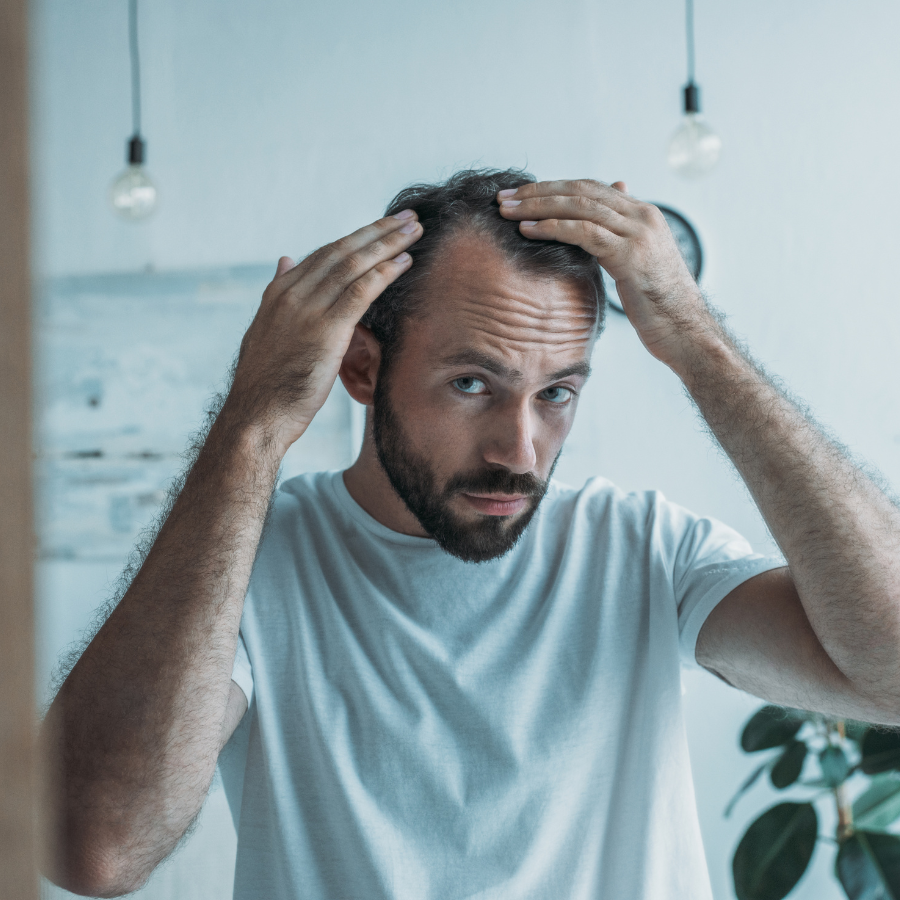Hair loss, also known as alopecia, is a common condition that can cause significant distress. It can occur due to a variety of reasons, including family history, medical conditions, aging, and stress. While hair loss is most commonly seen in men, it can affect women and children as well. There are a variety of treatments available, but the most effective option will vary depending on the cause of the hair loss. In some cases, such as with alopecia areata, the hair may grow back on its own. In other cases, such as with male pattern baldness, the hair loss is permanent. Regardless of the cause, hair loss can be a difficult condition to cope with. With the help of medical professionals and support groups, however, many people are able to manage their hair loss and live healthy and fulfilling lives.
Your doctor or nurse.
According to the American Academy of Dermatology, approximately 50 percent of men will experience some form of hair loss by the time they turn 50. For women, the figure is closer to 40 percent.
You are not sure why you are losing your hair.
Hair loss starts very suddenly.
You have itching or pain on your scalp in addition to hair loss.
You don’t feel well or feel very tired in addition to hair loss.
The most common cause of hair loss is a condition called androgenetic alopecia. This can look different in different people.
People with male-pattern hair loss often develop bald areas on the front and the top of the head.
People with female-pattern hair loss often have thinning hair on the top of the scalp, but don’t usually lose all their hair.
Hair loss may also be caused by alopecia areata. This is where the immune system attacks the parts of the skin where your hair grows. People with this type of alopecia may have small round spots or larger areas of hair missing.
Those are the two main types of hair loss, but it can be caused by a variety of other medical conditions and even some medications.
While there are many potential causes of hair loss, some of the most common risk factors include family history, medications, certain hairstyles, poor nutrition, smoking, and mental health conditions.
Poor nutrition can lead to deficiencies in essential vitamins and minerals that are necessary for healthy hair growth.
Smoking cigarettes can damage the hair follicles and impede blood flow to the scalp, leading to hair loss.
Mental health conditions such as anxiety and stress can also trigger hair loss by causing the body to release hormones that can damage the hair follicles.
Family history. If hair loss runs in your family, you may be more likely to experience it yourself.
Certain medications, such as those used to treat cancer, can cause hair loss as a side effect.
Hairstyle can also be a factor. Hairstyles that pull on the hair, such as tight ponytails, can damage the follicles and lead to hair loss.
Hair loss can be a symptom of a wide variety of medical conditions, ranging from hormone imbalances to autoimmune disorders. While it is often nothing to worry about, hair loss can sometimes be a sign of a more severe problem. There are many different signs and symptoms of hair loss.
One of the most common is a gradual thinning of the hair on the scalp. This can occur evenly over the entire head, or it may be more noticeable in certain areas, such as the temples or crown.
In some cases, hair loss may occur in patches, which can be circular or irregular in shape. Another common sign of hair loss is excessive shedding. This may cause the individual to lose large clumps of hair when brushing or shampooing.
In severe cases, the individual may start to develop bald spots. Hair loss can also cause changes in the texture of the hair, making it brittle or dry. In some cases, the hair may become brittle and break off easily.
Finally, hair loss can also be accompanied by other symptoms, such as itching or redness of the scalp.
There are several different ways to diagnose hair loss. The first step is to take a medical history and perform a physical examination. This can help to rule out other potential causes of hair loss, such as anemia or thyroid disease. Blood tests, pull tests, and a scalp biopsy may also be used to diagnose hair loss.
In a blood test, a sample of blood is taken from the arm and sent to a laboratory for analysis.
A pull test involves gently tugging on a small swath of hair to see how easily it comes out.
A scalp biopsy involves removing a small piece of skin from the scalp for examination under a microscope.
Light microscopy can be used to look for evidence of inflammation, infection, or damage to the hair follicle.
The results of these tests can help to determine the cause of hair loss and develop an appropriate treatment plan.
This depends on the cause of the hair loss. If it is caused by a health problem, treating the underlying condition may improve your hair loss. Otherwise, there are a variety of medications, both by mouth and topical, that can be used in hair loss.
For androgenetic alopecia:
Minoxidil (Rogaine) – both as a liquid or foam topical treatment (with or without a prescription) and by a prescription tablet prescribed by your doctor.
Spironolactone (Aldactone) – This is also an oral prescription medication, and it may help some females. It is important to know that this medication is not safe during pregnancy.
Alopecia areata
Overusing hairdryers, straighteners, and curling irons.
Wearing tight hairstyles such as ponytails or braids, any style that causes constant pulling.
Smoking
Dietary imbalances that result in low Vitamin B2 (riboflavin), B12, biotin, folate, and Vitamin D, iron, Vitamin E…the list goes on. Not having a nutritional diet can be detrimental to the overall health of your body, including your hair.
Losing your hair can be hard. If you feel depressed or anxious due to your hair loss, it’s important to talk to your doctor or nurse and get the help you need.
Consult with a professional for treatment of your hair loss.
Join a support group, you are not alone. More than 50% of women will experience noticeable hair loss at some point in life and about 70% of men lose hair as they age. Even 25% of men are bald before the age of 21!
Don’t be too hard on yourself, hair loss is stressful. Seek help and talk to someone if you are feeling anxious and depressed.
Learn about and understand the role that stress may play in hair loss.
Consider a wig if you are unable to regrow your hair.
Switch up your hairstyle, certain hairstyles can cover up and mask areas of hair loss or thinning.

If you have a question about a prescription transfer or ordering from NextRx, we’d love to hear from you.

This will close in 0 seconds